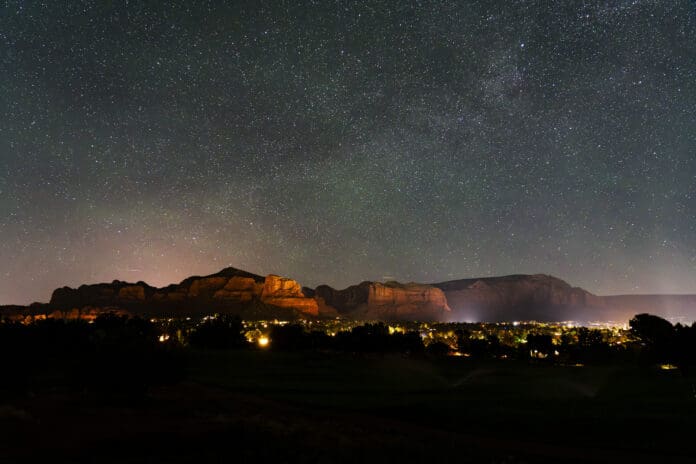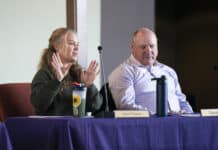
Yavapai County officials are discussing updating Section 603 of the county’s Planning & Zoning Ordinance, dealing with light pollution control, to include requirements related to LED lighting. LED lighting now makes up the majority of global lighting sales, according to the International Energy Agency, which was not the case when the policy was last updated.
The Astronomers of the Verde Valley are one group advocating in favor of the update.
“We have not had any discussions yet on [the] content of the ordinance, but it needs to be updated for LED issues,” Astronomers of the Verde Valley Vice President Dave Norton said. “Prior casual discussions have mentioned the need to get away from the bluewhite spectrum of LEDs that causes issues for astronomy because it cannot be easily filtered out. Lighting in the 2,000 to 3,500 Kelvin range is much better overall.”
A Massachusetts Institute of Technology study showed that artificial light increased by an estimated 49% globally between 1992 and 2017 and by as much as 400% in some regions. That has not been the case locally, as the Verde Valley has one of the highest concentrations of dark sky communities nationwide.
The amount of light pollution in the Verde Valley and Prescott has remained largely consistent over the last decade based on monthly averages of the amount of radiance, or light emitted from the Earth’s surface, going back to 2012. That data also shows a marked improvement in Jerome’s light pollution situation and an increase in light pollution in Cornville. Elsewhere in Yavapai County, Chino Valley’s radiance has doubled in the last 10 years, while Bagdad’s has increased.
Updates to the ordinance will go through the Planning and Zoning Commission, followed by the Board of Adjustments and Appeals and then county Board of Supervisors.
“[The ordinance] is significantly out of date because we don’t even mention LED lighting in it,” Assistant Director Mark Lusson said. “We are planning to go for a zoning ordinance amendment to that soon. That way, we can get it updated and include LED lights because the lumen count is affected by it. We’re going to make it to where it’s more with the times.”
Lusson explained how the lack of clarification can cause confusion.
“Someone could have an immense amount of LED lights and it would look out of compliance even though it wouldn’t [be] with our current ordinance,” Lusson said. “We might have different sections for halogen, incandescent and LED lights or a mix of those. We’re looking for a way to keep [the lumen count] on the lower end to meet that dark sky compliance.”
Currently, residential parcels of more than one acre are allowed 20,000 lumens of lighting; parcels one-half to one acre in size are allowed 10,000 lumens of lighting; and residential parcels under half an acre may have 7,500 lumens of lighting.
Changes in lumen levels would be enforced through building permits. Lusson pointed out that his department is complaint-driven with regard to lighting issues.
“The Dark Sky Ordinance is important to a lot of people in the county, including those unincorporated areas,” Lusson said. “We want to make something that is accepted by everyone, and everyone can appreciate that. Because a lot of people do move to portions of Yavapai County because of that ordinance. They move away from the cities where they don’t have them, or they’re lenient on them. Because people like to look up at the sky and see the stars, people appreciate that. “




















